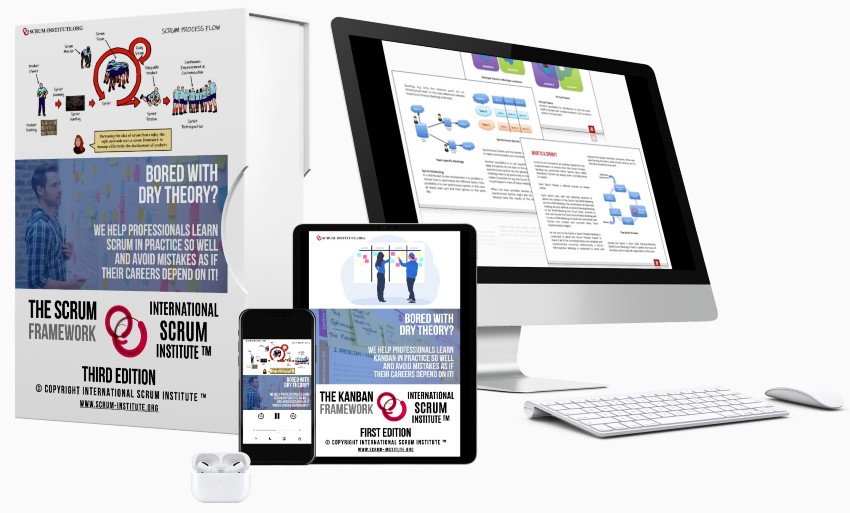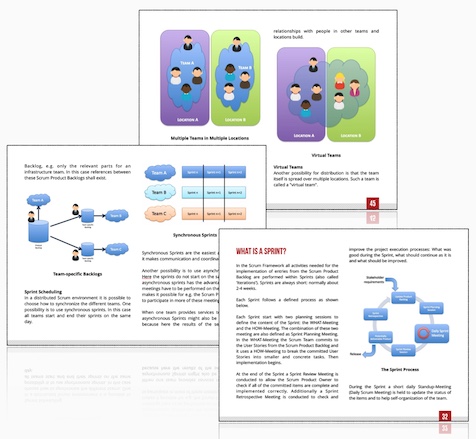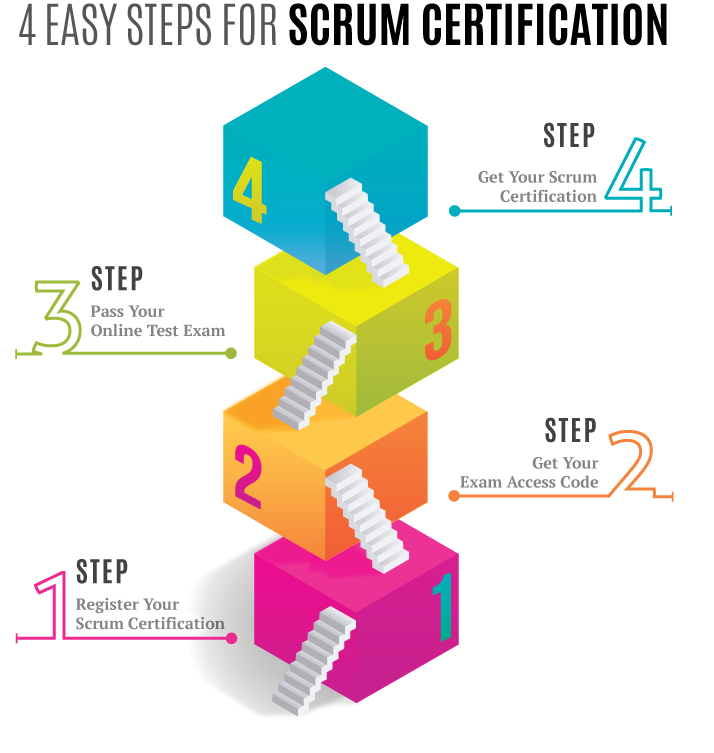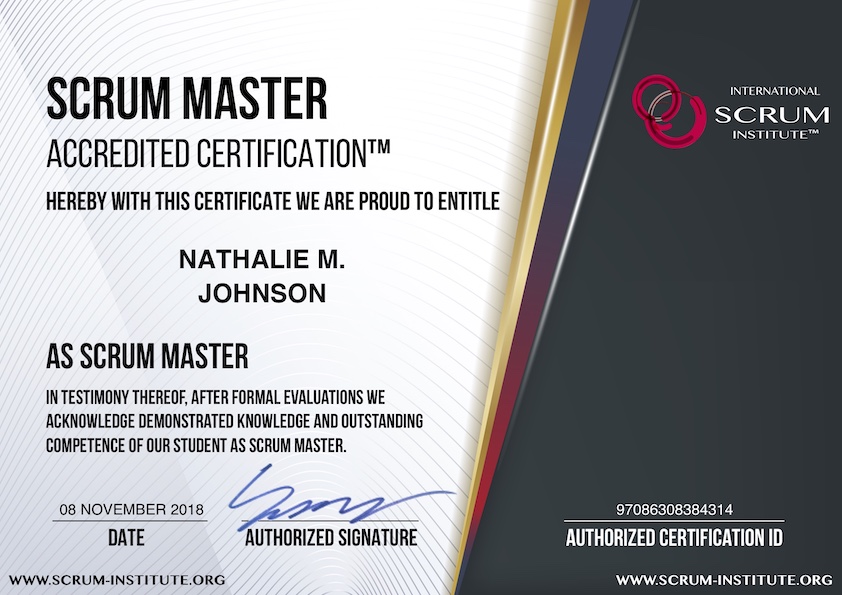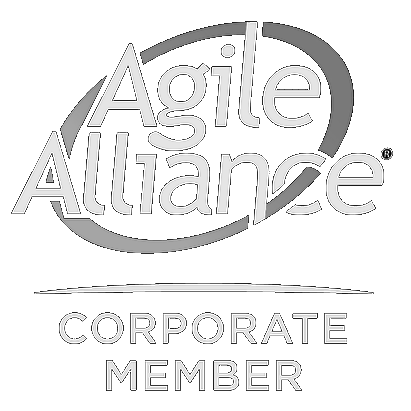Capacity Planning of Agile Scrum Teams: Project Work Guide for Effective Sprint Planning and Team Members Velocity
International Scrum Institute™
Last Updated: January, 7th 2025
Capacity Calculation in Scrum
Capacity Planning in Scrum
Story Points and Team Velocity in Sprints
The rigor of effective resource allocation in Scrum projects, team velocity estimation and agile scrum capacity calculation, much like the detailed planning and tracking of project orders (Po) in traditional project management, can often feel akin to a sprint planning session.
It requires attention to details and a specific execution approach. Distilling the labyrinthian complexity that it may seem on the surface, the idea is to provide visibility into the process with practical strategies and powerful tools. Shrouded in numerous misconceptions, capacity planning is a critical piece of every successful Scrum project, which Scrum-trained company employees undertake. Yet, it remains one of the most undervalued and misunderstood aspects among Agile pursuits - even by experienced scrum masters in established companies.
In 2024 and beyond, technological advancements and intuitive project management tools, for example, tools focusing on the minute details and commitment of tasks, have undoubtedly amplified the capacities of teams and simplified the process of delivering quality services. This blog post unwraps a step-by-step guide to effective resource allocation. Besides, it simplifies capacity planning and calculation with the help of case studies, sidesteps common pitfalls, and propels your company's Scrum projects on a trajectory to triumph, accelerating the progress towards set deliverables. So, buckle up; you're about to master the art and science of Scrum capacity planning and understand its focus factor!

Scrum Capacity Planning
Overview of Scrum Capacity Planning
Our article on Scrum capacity planning offers companies a comprehensive guide on calculating and allocating productive engineering time within business sprints. For instance, it covers order of operations, gathering team member availability, accounting for backlog items, considering working hours, and balancing competing priorities. Following the advice of experts and these guidelines, teams of employees can understand their capacity better and commit to productive work on company projects in Agile environments, one of the primary reasons for its wide adoption in various organizations with their motivated people. This information is not only for a scrum master, but it's relevant to scrum product owners and scrum team members too.
Importance of Capacity Planning in Scrum
Scrum, a widely utilized agile methodology among companies, helps teams develop and deliver high-quality products iteratively and incrementally. A core tenet of the Scrum framework is time-boxed sprints. Each sprint has a set duration and goal, with the team of employees working collaboratively to achieve that goal and ensure the progress of services. Capacity planning in Scrum is vital for making a difference by managing the team's workload, a commitment they make to ensure they can complete all planned work within each sprint — a case of managing company resources effectively.
Capacity planning in Agile is essential for successful project and service delivery, from both the employees' team and company's customer perspective. At its core, it offers ways to calculate how much productive engineering time a company has during a given sprint. It provides the team with an overall understanding of their capacities and helps them commit to completing productive work realistically. Through visibility into the process, this helps in tracking the progression of deliverables.
One crucial aspect of capacity planning in companies is identifying the right balance between overloading and underloading the team of employees, where overload leads to stress and burnout, while underloading leads to lower productivity. An accurate understanding of capacity ensures that tasks are assigned effectively while keeping in mind the careful allocation of resources to maximize business value.
In a company, using capacity-based planning, with the help of experts, also enhances the overall predictability of project delivery timelines, an order of operation that is relevant for meeting stakeholder expectations. The action of minimizing the risk of deadline slips, enabling you, the scrum master, to estimate more accurately when a specified feature or deliverable might be finished, brings a sense of trust in the development team. This also allows for iterations along the journey, so mistakes can be turned into learning opportunities.
To further illustrate, consider baking a cake. Just as you measure out ingredients precisely to ensure a perfect result, in company Scrum capacity planning, you allocate employees correctly by skill set and availability to realize optimal outcomes. It's a journey that demands apt action and careful capacity management, akin to adjusting the recipe based on past baking iterations.
Capacity planning in Agile is essential for project success. It involves calculating the available productive engineering time during a sprint and helps the team commit to realistic goals. Finding the right balance between overloading and underloading ensures optimal productivity and avoids burnout. Accurate capacity understanding improves predictability, reducing the risk of missed deadlines. Capacity-based planning is comparable to precise ingredient measurements in baking, where allocating resources effectively leads to optimal outcomes. Effective capacity planning results in satisfied customers, improved quality, and increased efficiency by keeping the big picture in focus.
Capacity Planning Tools and Methods
Finally, effective company scrum capacity planning results in well-managed projects, contributing to satisfied customers, improved quality and increased efficiency. Deciding what actions can be taken within a sprint aids in keeping the larger picture of progress towards deliverables in focus. Capacity planning is a must-have tool in the toolkit of modern businesses. It is essential for efficient resource allocation and project execution in today's competitive business environment, which ultimately saves both time and money. Here are some capacity planning tools and methods that scrum teams can use to streamline their workflow and create engaging content that caters to their clients’ needs:
- Agilefant
- Atlassian JIRA
- Pivotal Tracker
- Microsoft Project Server
- Trello
These tools prioritize collaboration, process standardization, and workload management. They provide a service with capabilities such as resource allocation, prioritization, reasons for selection, and tracking performance metrics, all essential for running smooth operations. A well-planned approach could drive sales when each aspect of the project is well managed. The development team can avoid mistakes and enhance their capability to deliver successfully.
Estimation of Team Capacity and Velocity
Before you start planning, it’s important to ask critical questions regarding the velocity of your team. Scrum master needs to ensure that the scrum team understands that the velocity is the measurement of how much work a team can complete during one sprint. By becoming equipped with these tools, organizations can facilitate an easier and more thorough sprint planning process, reducing costs and oversights. Embarking on a project course, it’s crucial to determine the right velocity to ensure realistic project timelines. This approach necessitates detailed organizational skills, understanding that acknowledging the roles and tasks of each team member will help forecast the best possible outcomes. Trust in your team's capacity management can enhance the journey towards project success.
Velocity estimation will also help in determining the team's capacity. As leaders in your businesses, it's your service to grasp this information and place your team on the right track to succeed. Ensuring accurate estimations (See more about Scrum Effort Estimation) will build trust in your team's actions and capacity, vital in the journey towards project completion.
Estimating capacity has a direct correlation with estimating velocity. Hence, understanding team capacity is critical in making accurate estimations for future sprints. This approach is crucial to honing your organization's skills in perfecting workflow management and targeting the right sales outcomes. It's about understanding the team's development journey and the actions needed to correct and learn from mistakes.
A team’s capacity is based on available working hours, time off, and any events like holidays or training sessions that could impact their ability to work. Accounting for these needs of your team members, and knowing how much money it costs to facilitate their productivity, can improve your capacity estimation. Trust in these estimations is essential along the iterative journey of project management.
Estimating the capacity accurately helps your team set achievable goals and manage their actions efficiently during sprints. If there aren’t enough resources available during a sprint due to underestimation, teams may end up delivering less value than anticipated or risking high burnout rates from overloading team members. This mistake could potentially cost businesses money and productivity.
It is essential to keep track of estimates versus actual costs at every stage of your project to adjust accordingly while learning lessons for future reference. Trust in your team's actions and capacity management throughout iterative development stages ensures a productive journey without critical mistakes.This system, not unlike the rules of a sophisticated game, requires thorough detail and robust organization skills to match the ever-changing demand of your team's needs and your client's expectations.
Scrum Velocity Calculation
Before each sprint, a sprint planning meeting is conducted and Velocity, a fundamental metric used in Agile and Scrum projects, is assessed to measure the team's performance. It not only represents the number of story points the team can complete during a sprint, but also serves as a gauge of your team's capacity to deliver content and services in an organized manner. This mechanism ensures that every person on the team has a clear understanding of their role.
Velocity is measured by calculating the total number of story points completed by the team in a sprint. To aid in this process, it's critical for leaders to constantly update their knowledge through self-paced courses and articles. Understanding and mentoring others about its importance leads to the betterment of every project detail. The right calculation can not only lead to an increased return on investment but can also give a boost to sales.
When calculating velocity, do not leave out anything, but make sure to exclude unfinished stories from previous sprints as well as stories added mid-sprint that can't be finished in those specific sprints of interest for velocity measurements. Adherence to this rule answers questions about your team's capacity and the costs associated with increased efficiency.
| Sprint | Number Of Stories | Story Point |
|---|
| Sprint 1 | 6 | 29 |
| Sprint 2 | 8 | 34 |
| Sprint 3 | 7 | 28 |
How Is Team Capacity Calculated in Agile?
Step-1: Calculate The Focus Factor: Depending on the number of team members you have in your Scrum team, you can effectively determine the Focus Factor (which is the team's ability to remain focused on the sprint goals without any other distractions), by using the below formula:
"Focus Factor = Sprint Velocity / Team Capacity"
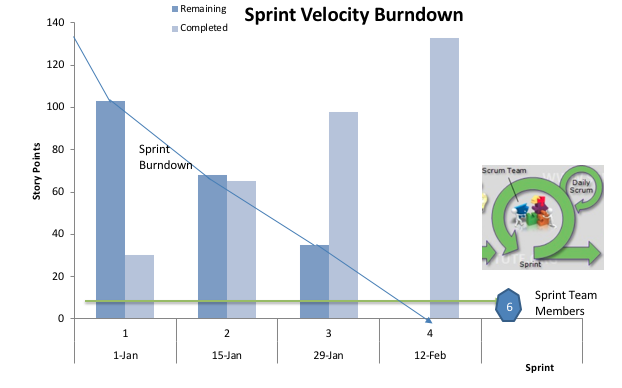
Sprint Velocity & Burndown Chart
Step-2: Calculate The Sprint Velocity: Sprint Velocity is the average completed (estimated) story points over the past three to five iterations. Team Capacity is a product of the total number of Scrum team members multiplied by the number of team productive days.
Here is a quick example for clarification: If your average sprint story point is 32, and you have 6 team members who are available to work (8hrs/day).
"Focus Factor will be: 32 /(6*8) = 0.67"
Step-3: Calculate The Scrum Team Capacity: So, in this example of scrum team capacity and velocity calculation, for a Focus Factor of 0.67, to now get the effective Team Capacity, it is the Focus Factor multiplied by the total number of hours the team is available for work. For a 2-week sprint (say it from 1st January), it is 10 days, taking Saturdays and Sundays off (if applicable).
"Team capacity would be 0.67 * (6*8*10) = 321.6 hours"
From the calculations of the above example, this team will have 158.4 (480 - 321.6) (Total working hours of the team in a Sprint - Team Capacity) hours for Sprint Planning, Daily Scrum, Sprint Review, Sprint Backlog grooming, Sprint Retrospective, Breaks, team meetings (story point clarifications with PO) and other needs that arise on the course of the sprint.
It is vital to always consider your Team Capacity (a direct function of the Focus Factor (normally between 0.6 to 0.8)) when committing to Sprint Story points! Otherwise, you will be setting an unachievable sprint target for your team. With Team Capacity, you can fairly predict the number of hours your team is actively working on committed product increment, their ability to remain focused on the sprint goals without any other distractions - and also know when you have a healthy team.
Story Points Estimation
Story point estimation can be equated to planning for a long-distance trip, where one can allocate time and resources, but cannot entirely predict roadblocks or disruptions along the way. Just as in business, it’s about anticipating needs, planning for costs, and ensuring a positive outcome as far as sales and client satisfaction are concerned. The adaptability skills of our staff, particularly those of project leaders, are vitally important in managing unpredictable circumstances. Efficient operations in such scenarios can drastically reduce cost and ensure a seamless work experience for each employee.
Story points estimation, driven by insights drawn from data, is an integral part of Agile projects' planning processes and scrum meetings. This method offers an improved way to assign value to user stories based on complexity instead of time spent, directly addressing our clients' needs and providing unparalleled accuracy in estimating capacity.
At the beginning of each sprint, each member, armed with their own personal experiences and technology toolkits, assigns story points using a Fibonacci sequence (1,2,3,5,8) which reflects increasing levels of complexity. This democratic approach helps secure the best outcome for the organization while underscoring our inclusive culture.
For instance, if designing and implementing a login functionality require more effort than creating a logo on your website, it is reasonable to assign higher story points to the former than the latter. The detail in evaluating these complexities is crucial to the team's growth, the project's success, and overall employee experience.
The input from all team members is pivotal here, providing valuable insights to attain a more accurate estimation. In some cases, teams take weighted averages of individual votes to arrive at a final story point estimate, demonstrating the importance of every single person's contribution.
Therefore, using story point estimations for capacity planning in Scrum projects can help better focus on achieving development goals by addressing complex issues first. Such a method equips us with the technology and understanding essential to improving our team's collective skills.
Anticipation of Scope Changes and Adjustments
In Scrum, capacity planning meetings require the team to be adaptable and anticipate potential changes. The team should prepare for adjustments that may be necessary, providing a smoother project execution and improving the operations within our organization.
If at any point in the sprint, the team realizes they might not complete their work as planned due to unexpected demands, adjustments must be made. The feedback from project stakeholders plays a crucial role in forecasting necessary alterations through effective communication and in making strategic changes that best suit our clients' needs. The agility required to modify this project planning keeps us responsive to ever-evolving circumstances.
It’s important for all members to be on the same page about scope changes, fostering confidence among the team. This common understanding, a vital key to effective communication, can run across the entire spectrum of the project. This means that all areas - from initiation to closing - are covered, providing a more cohesive work experience for everyone.
Incorporating Holidays and PTO in Planning
Effective capacity planning factors in holidays and PTO (Paid Time Off) as these elements can impact the amount of work achievable in a sprint. Thus, a strategy may have to be devised to ensure the sprint goal remains achievable despite vacations or public holidays, utilizing forecasting frameworks and other methods. The ability to navigate these changes is vital, ensuring cost efficiency and continuity in providing services to our clients. With the utilization of tools and platforms, we can better comprehend team members' schedules. It's essential to identify upcoming national holidays, shifting demands, and make the necessary adjustments for effective project planning.
For instance, if a developer is going on vacation for two weeks out of an eight-week cycle/iteration, there would only be six weeks of effective working time available. Here, the reality of a range of things such as PTO or personal commitments come into play. Resourceful teams leverage the knowledge of these details, as well as their agility, to manage their time effectively.
Similarly, planned staff meetings, training sessions, email reading time, and other non-tracked activities should also be factored into capacity planning calculations. These areas of utilization can directly impact the team's ability to excel, making such planning solutions essential for maximizing productivity and revenue.
Building a project schedule, a critical section in Scrum projects, is an essential component of capacity planning. It involves identifying the project's various tasks and allocating time for each task, considering the team's overall capacity and availability. The first step in building a project schedule is defining your tasks clearly. Then, through effective communication and accurate utilization of resources, team members are assigned appropriate tasks.
Building and Prioritizing Project Schedule
For instance, suppose you're working on developing a new software product. Your project schedule and other availability factors might entail a range of tasks such as gathering requirements, designing user interfaces, coding, testing, and deployment. To build your project schedule effectively, you need to break down these high-level tasks into smaller and more specific tasks using effective project planning frameworks. This planning not only helps in meeting the demands of the project but also promotes agility in adjusting to any unforeseen changes.This process is similar to creating a recipe for cooking. If you want to bake a cake, you can't merely put all the ingredients together without measuring them first. You have to create a recipe that lists all the ingredients required, specify how much of each ingredient you need, and outline the steps involved in making the cake.
A table can help sort out your project schedule and availability details effectively. The benefits of such visual aids in the project management strategy are undeniable, allowing teams to see their tasks and timelines clearly, creating valuable linkage to the overall progress and training plans as well.
Prioritizing your project schedule is of the essence. With multiple tasks competing for attention and finite resources at your disposal, it's crucial to prioritize which tasks need immediate attention and which ones can be postponed or parked. One way to prioritize is by putting the most critical items at the top of your list based on complexity or business value. This adds to the overall confidence in achieving the desired results and ultimately impacts the potential revenue.
Continuing with our baking analogy - if we're baking bread first before cakes as we're taking lunch, as bread is necessary for lunch, then we have prioritized our baking tasks, illustrating a practical, real-life strategy for task sequencing. This is a simple yet effective tip for highlighting the importance of prioritization and planning holiday factors.
| Task | Resource | Duration |
|---|
| Gathering Requirements | Product Owner | 2 weeks |
| Designing User Interfaces | UI/UX Designer | 3 weeks |
| Coding | Developers | 8 weeks |
| Testing | QA Team | 4 weeks |
| Deployment | DevOps Engineer | 1 weeks |
Prioritizing your project schedule is of the essence. With multiple tasks competing for attention and finite resources at your disposal, it's crucial to prioritize which tasks need immediate attention and which ones can be postponed or parked. One way to prioritize is by putting the most critical items at the top of your list based on complexity or business value. This adds to the overall confidence in achieving the desired results.
Continuing with our baking analogy - if we're baking bread first before cakes, as we're taking lunch, as bread is necessary for lunch, then we have prioritized our baking tasks, illustrating a practical, real-life strategy for task sequencing.
Additionally, it's essential to allocate enough buffer time within your project schedule to account for unforeseeable delays, challenges or a training. This buffer time, calculated through effective forecasting, should be factored in when calculating the overall duration of each task and the entire project. Without buffer time allotted, there can be a shortage of resource capacity, causing unwanted setbacks.
Capacity Planning Recap
According to the best agile Scrum practices inspired by the Scrum guide, capacity planning involves estimating the team's capacity for each sprint by considering factors such as team members' availability, their skills, and any external dependencies. This helps in ensuring that the team takes on a realistic amount of work and can deliver. Here are some capacity planning stats:
- On average, teams that use scrum capacity planning experience a 25% increase in productivity.
- Approximately 90% of successful agile projects utilize some form of scrum capacity planning.
- Scrum capacity planning reduces the likelihood of project delays by 40%.
- Teams using scrum capacity planning report a 75% decrease in overall project costs.
- Organizations that implement scrum capacity planning see a 15% improvement in customer satisfaction ratings.
Scrum capacity planning is a practice used in agile project management to determine the amount of work a team can handle in a given sprint. It involves estimating the team's available capacity by taking into account factors such as team size, individual skills, and other commitments. The purpose of capacity planning is to ensure that the team does not take on more work than they can realistically complete within a sprint. Capacity planning helps teams to allocate their resources effectively and set realistic goals for each sprint. It involves regular monitoring and adjustment throughout the project to ensure that the team's capacity aligns with the demands of the work being undertaken.
With this said, it's time to say good luck to you the reader about Scrum Capacity Planning and Calculation Meetings, and remind you to approach it with an open mind and a willingness to adapt and iterate as needed. By embracing the principles of Scrum and staying committed to continuous improvement, teams can optimize their capacity planning efforts and achieve greater success in their projects!
Thank you for your dedication to the Scrum methodology, and we wish you the best on your journey to becoming a Scrum expert.
|
Share this Article with Your Friends and Colleagues!
|
|

|

|

|

|
|
 SCRUM INSTITUTE™
SCRUM INSTITUTE™